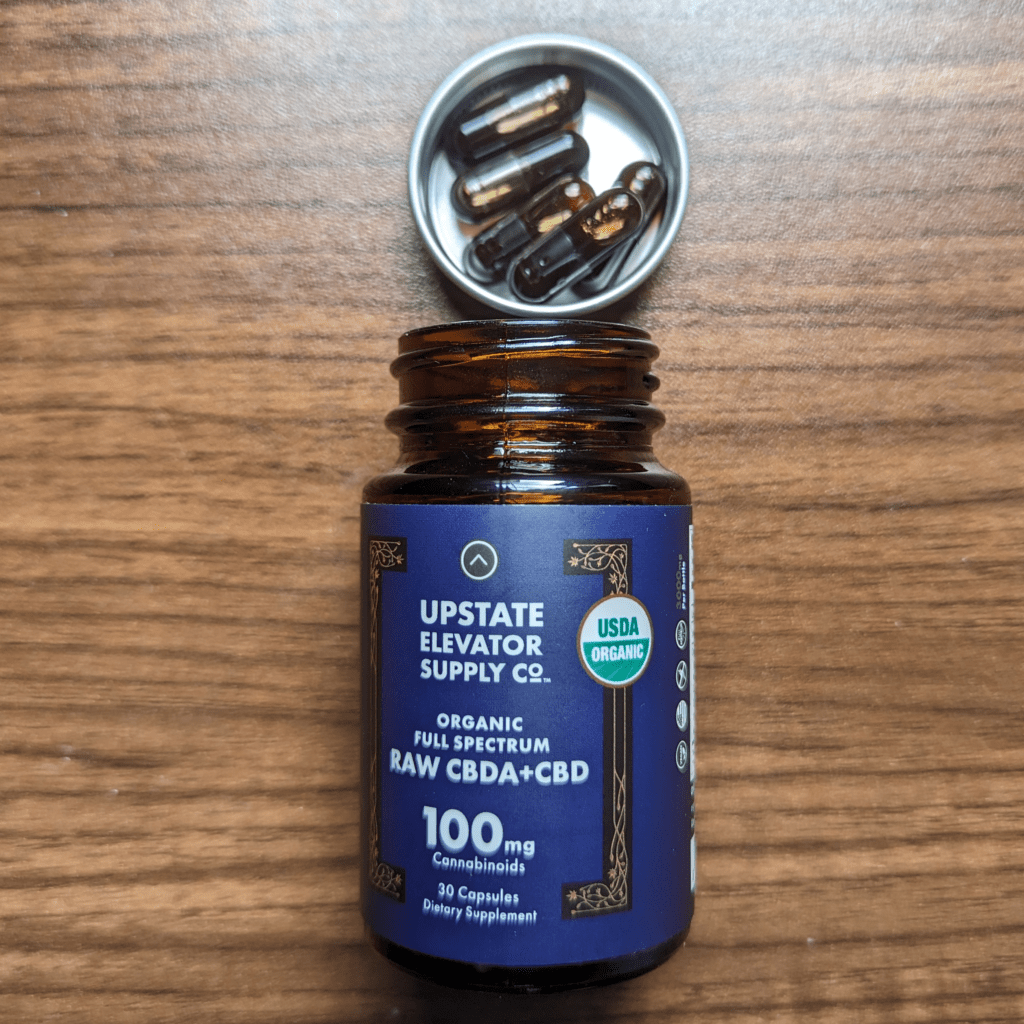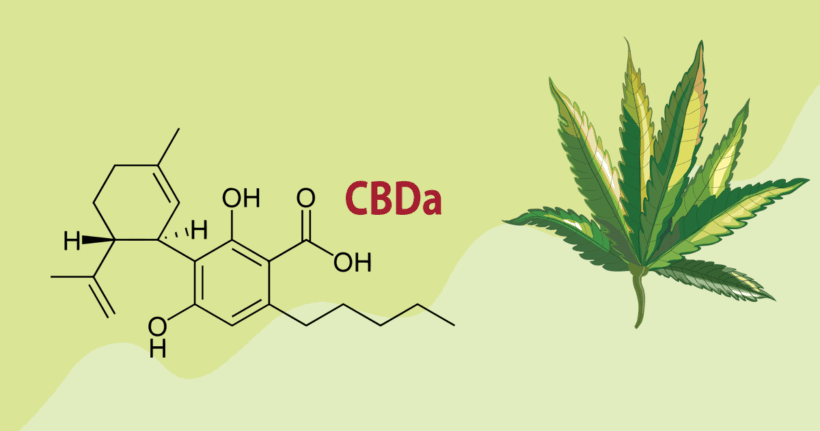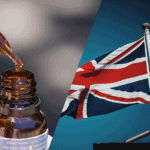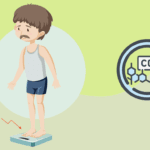We’re all familiar with CBD. But did you know about its parent molecule CBDa? This cannabinoid is abundant in fresh cannabis, particularly hemp, the low-THC variety of the plant.
CBDa offers a unique set of potential benefits worth exploring, including antidepressant and anti-seizure effects that may rival CBD.
Here’s what you should know about CBDa’s origins, potential benefits, relationship with CBD, the kinds of products it’s found in, and more.
Table of Contents
What is CBDa?
Cannabidiolic acid (CBDa) is a naturally occurring, non-intoxicating cannabinoid found in fresh cannabis. CBDa is the precursor (parent compound) of CBD since it transforms into CBD when exposed to heat, a process called decarboxylation (1).
In fact, most cannabinoids (including THC) start as cannabinoid acids which must be decarboxylated before they become the “active” cannabinoids we’re familiar with.
CBDa levels are particularly high in fresh hemp, the low-THC variety of cannabis used to make CBD products.
Where CBDa Comes From
Like most cannabinoids, CBDa starts as cannabigerolic acid (CBGa), better known as the “mother cannabinoid” (1). Certain enzymes in the cannabis plant convert CBGa into other acidic cannabinoids, namely CBDa, THCa, and CBCa.
Did you know? Technically speaking, CBDa is a minor cannabinoid because its levels in finished cannabis products are usually relatively low.
CBDa vs. CBD: Key Differences and Similarities
| CBDa | CBD | |
| Intoxicating? | No | No |
| Cannabinoid Type | Acidic | Neutral or “active” |
| Main Potential Benefits | Anti-inflammatory, anti-seizure, antidepressant, anti-nausea, anticancer | Anti-inflammatory, pain relief, anti-seizure, anti-anxiety, anti-nausea, neuroprotective, anticancer, antipsychotic |
| Known Mechanisms | serotonin receptor, COX-2 enzyme | Endocannabinoid system, serotonin receptor, and more |
While CBDa and CBD are closely related, they have both similarities and differences.
Similarities:
- Both CBDa and CBD are non-intoxicating cannabinoids found in cannabis.
- They share some properties, such as anti-inflammatory and antidepressant effects
Differences:
- CBDa is the precursor to CBD and is found in raw cannabis plants
- Unlike CBD, CBDa doesn’t seem to interact with the endocannabinoid system
- CBDa is a lot less stable since it readily converts into CBD when exposed to heat
Potential Benefits of CBDa
Research on CBDa is still in its early stages, but initial findings suggest several potential health benefits:
- Inflammation and pain relief. CBDa demonstrated anti-inflammatory properties in a 2008 study, where it inhibited COX-2, a pro-inflammatory molecule (2). Similarly, a 2018 rodent study found that CBDa reduced inflammation and pain (3).
- Antidepressant. A 2018 rat study found that CBDa had antidepressant effects, while a 2023 study of an artificial, stable form called CBDa methyl ester reported similar findings (4, 5).
- Seizures. A 2019 study reported anticonvulsant effects in a mouse model of Dravet syndrome. Meanwhile, a 2021 rat study found that CBDa had comparable anticonvulsant efficacy to CBD and was more effective when combined with other cannabinoids, providing further evidence for the cannabis entourage effect (6, 7).
- Nausea. CBDa demonstrated anti-nausea and anti-vomiting effects in a 2013 rat study (8).
- Obesity. A 2022 study in obese mice found that a stable version of CBDa (CBDa methyl ester) resulted in weight loss, improved blood sugar and lipid levels, and helped with liver dysfunction (9).
- Alzheimer’s. A 2023 study reported that CBDa and THCa may help improve memory and reduce Alzheimer’s disease-like features in mice (10).
- Cancer. Early studies have shown that CBDa may have anticancer properties (11).
What’s especially promising about CBDa is that it’s estimated to be about 100 times better at connecting with a specific serotonin receptor (5-HT1a) than CBD (12). This suggests that it may be more effective than CBD at helping with depression and some other issues.
In fact, CBDa caught the attention of biomedical company GW Pharmaceuticals, which makes Epidiolex, the only FDA-approved CBD drug. The company has filed patents for using CBDa to treat epilepsy, skin conditions, and cancer.
Still, while the potential of CBDa is real, it’s crucial to conduct more human research to understand its effects and applications fully.
How Does CBDa Work?
While research is still ongoing, CBDa is believed to work in several ways, including: (11)
- Serotonin receptor activation: CBDa seems to interact with the 5-HT1A serotonin receptor, which plays a role in regulating mood, anxiety, and other processes.
- COX-2 enzyme inhibition: CBDa may inhibit the COX-2 enzyme, which is involved in producing pro-inflammatory compounds called prostaglandins. By inhibiting COX-2, CBDa may lower inflammation and pain.
It is essential to note that research on CBDa is still in its early stages, and further studies are needed to understand how it works thoroughly.
CBDa and COVID-19 Research
A 2022 study discovered that CBDa and cannabigerolic acid (CBGa), two compounds found in raw cannabis, might help block COVID-19 from infecting human cells.
The researchers tested various hemp compounds to see which ones were the best at blocking the virus’ spike protein, which initiates infection. They found that CBDa and CBGa were the most effective and prevented the virus from infecting human cells.
The study concluded that CBDa and CBGa could potentially prevent and treat COVID-19 infections (13).
Although these findings sound promising, a pair of researchers responded to the results, highlighting critical shortcomings: (14)
- Difficulty translating petri dish findings to the human body
- Short half-life of CBDA and high doses required
- Potentially high costs and limited availability of CBDa and CBGa
- Potential safety concerns with high doses
The bottom line is that CBDa and CBGa are unlikely candidates for further COVID-19 drug development.
Safety & Side Effects
The safety and side effects of CBDa aren’t fully understood because of the lack of human research.
Given that it’s non-intoxicating and closely related to CBD, which is generally considered safe, CBDa is likely to be similar. Potential side effects of CBD include dry mouth, drowsiness, and low blood pressure, so CBDa may have similar consequences.
CBDa might also interact with some medications, so it’s a good idea to talk to your doctor before adding CBDa to your regimen.
CBDa Dosage
There isn’t a one-size-fits-all dosage for CBDa. Like other cannabinoids, it depends on many factors, like your weight, genetics, and the product you’re using.
A good way to find the proper dosage is to start small and increase slowly until you get the desired effects, better known as the “start low and go slow” approach (15). Alternatively, you can begin with the dosage your CBDa product suggests and adjust from there.
Shopping for CBDa Products
CBDa is available in various product types, similar to CBD. In fact, many CBD brands now offer so-called “raw” CBD products, which haven’t been decarboxylated and contain large amounts of CBDa. These full-spectrum formulas are rich in CBDa, CBD, and other cannabinoids, terpenes, and flavonoids.
Raw CBDa products have been growing in popularity because they’re as close to natural as possible. They come in various forms, including:
- Tinctures: Like CBD oil, CBDa tinctures are liquid extracts that can be taken sublingually (under the tongue) or added to foods and beverages.
- Capsules: CBDa capsules offer a convenient, pre-measured dose but suffer from relatively low absorption.
- Edibles: CBDa-infused gummies, chocolates, and other edibles provide a tasty and discreet way to consume CBDa. But like capsules, low absorption is a concern.
- Topicals: CBDa-infused creams, balms, and lotions can be applied directly to the skin and are ideal for localized concerns.
- Raw hemp: If you’re looking for the most natural product possible, fresh, raw hemp leaves and flower can be juiced and blended into drinks. While this isn’t ideal for absorption because cannabinoids aren’t water-soluble, you’ll get a lot of CBDa and other beneficial compounds.
You should also remember that CBDa is unstable because it easily decarboxylates into CBD when exposed to heat. That’s why storing your CBDa products in a cool, dry, dark place away from light, heat, humidity, and air exposure is imperative.

My Experience with CBDa
I’ve tested several high-CBDa oils and capsules. Similar to full-spectrum CBD formulas, I felt relaxation and calm that helped me with stress and sleep. But one key difference is that my mood also improved, with an uplifted or happy feeling that I don’t usually get from regular CBD products.
For that reason, I like CBDa formulas as an alternative to regular CBD when my mood is a bit down. I also like taking CBDa products before heading out for a social event. As always, keep in mind that cannabinoids affect everyone differently, so my experience won’t necessarily match yours.
CBDa: A Promising Partner for CBD
Cannabidiolic acid (CBDa) is an intriguing cannabinoid that offers a range of potential health benefits. While research on CBDa is still in its infancy, preliminary findings suggest it may have anti-inflammatory, antidepressant, anticonvulsant, anti-obesity, and other promising properties.
If you’re interested in trying CBDa, I recommend using “raw” CBD products that advertise high levels of CBDa. If you’re more hands-on, you can also try juicing raw, fresh hemp leaves and buds.
I recommend checking the third-party lab test results to see how much CBDa is present. If you’re looking to benefit from CBDa, it should account for at least 15% of the product’s total cannabinoid content.
Sources
- Tahir, M. Nazir, et al. “The biosynthesis of the cannabinoids.” Journal of cannabis research 3.1 (2021): 1-12.
- Takeda, Shuso, et al. “Cannabidiolic acid as a selective cyclooxygenase-2 inhibitory component in cannabis.” Drug Metabolism and Disposition 36.9 (2008): 1917-1921.
- Rock, Erin M., Cheryl L. Limebeer, and Linda A. Parker. “Effect of cannabidiolic acid and∆ 9-tetrahydrocannabinol on carrageenan-induced hyperalgesia and edema in a rodent model of inflammatory pain.” Psychopharmacology 235 (2018): 3259-3271.
- Hen-Shoval, D., et al. “Acute oral cannabidiolic acid methyl ester reduces depression-like behavior in two genetic animal models of depression.” Behavioural brain research 351 (2018): 1-3.
- Hen-Shoval, Danielle, et al. “Cannabinoid Receptor 2 Blockade Prevents Anti-Depressive-like Effect of Cannabidiol Acid Methyl Ester in Female WKY Rats.” International Journal of Molecular Sciences 24.4 (2023): 3828.
- Anderson, Lyndsey L., et al. “Pharmacokinetics of phytocannabinoid acids and anticonvulsant effect of cannabidiolic acid in a mouse model of Dravet syndrome.” Journal of natural products 82.11 (2019): 3047-3055.
- Goerl, Brett, et al. “Cannabidiolic acid exhibits entourage-like improvements of anticonvulsant activity in an acute rat model of seizures.” Epilepsy research 169 (2021): 106525.
- Bolognini, D., et al. “Cannabidiolic acid prevents vomiting in S uncus murinus and nausea‐induced behaviour in rats by enhancing 5‐HT1A receptor activation.” British journal of pharmacology 168.6 (2013): 1456-1470.
- Ben-Cnaan, Elad, et al. “The Metabolic Efficacy of a Cannabidiolic Acid (CBDA) Derivative in Treating Diet-and Genetic-Induced Obesity.” International Journal of Molecular Sciences 23.10 (2022): 5610.
- Kim, Juyong, et al. “The Cannabinoids, CBDA and THCA, Rescue Memory Deficits and Reduce Amyloid-Beta and Tau Pathology in an Alzheimer’s Disease-like Mouse Model.” International Journal of Molecular Sciences 24.7 (2023): 6827.
- Formato, Marialuisa, et al. “(‒)-Cannabidiolic acid, a still overlooked bioactive compound: An introductory review and preliminary research.” Molecules 25.11 (2020): 2638.
- Russo, Ethan B. “Cannabis therapeutics and the future of neurology.” Frontiers in integrative neuroscience (2018): 51.
- van Breemen, Richard B., et al. “Cannabinoids block cellular entry of SARS-CoV-2 and the emerging variants.” Journal of natural products 85.1 (2022): 176-184.
- Brown, Joshua D., and Amie J. Goodin. “Will Cannabis or Cannabinoids Protect You from SARS-CoV-2 Infection or Treat COVID-19?.” Medical Cannabis and Cannabinoids 5.1 (2022): 32-35.
- Lucas, Catherine J., Peter Galettis, and Jennifer Schneider. “The pharmacokinetics and the pharmacodynamics of cannabinoids.” British journal of clinical pharmacology 84.11 (2018): 2477-2482.

Gleb is a freelance writer from Vancouver, Canada specializing in CBD and cannabis. He’s read thousands of studies on CBD and other supplements, helping him translate complex science into plain language. Gleb has tried and reviewed dozens of CBD brands and products, written third-party testing reports, and knows the CBD industry inside and out. When not writing, he likes to kickbox, travel, and tell everyone how awesome intermittent fasting is.





